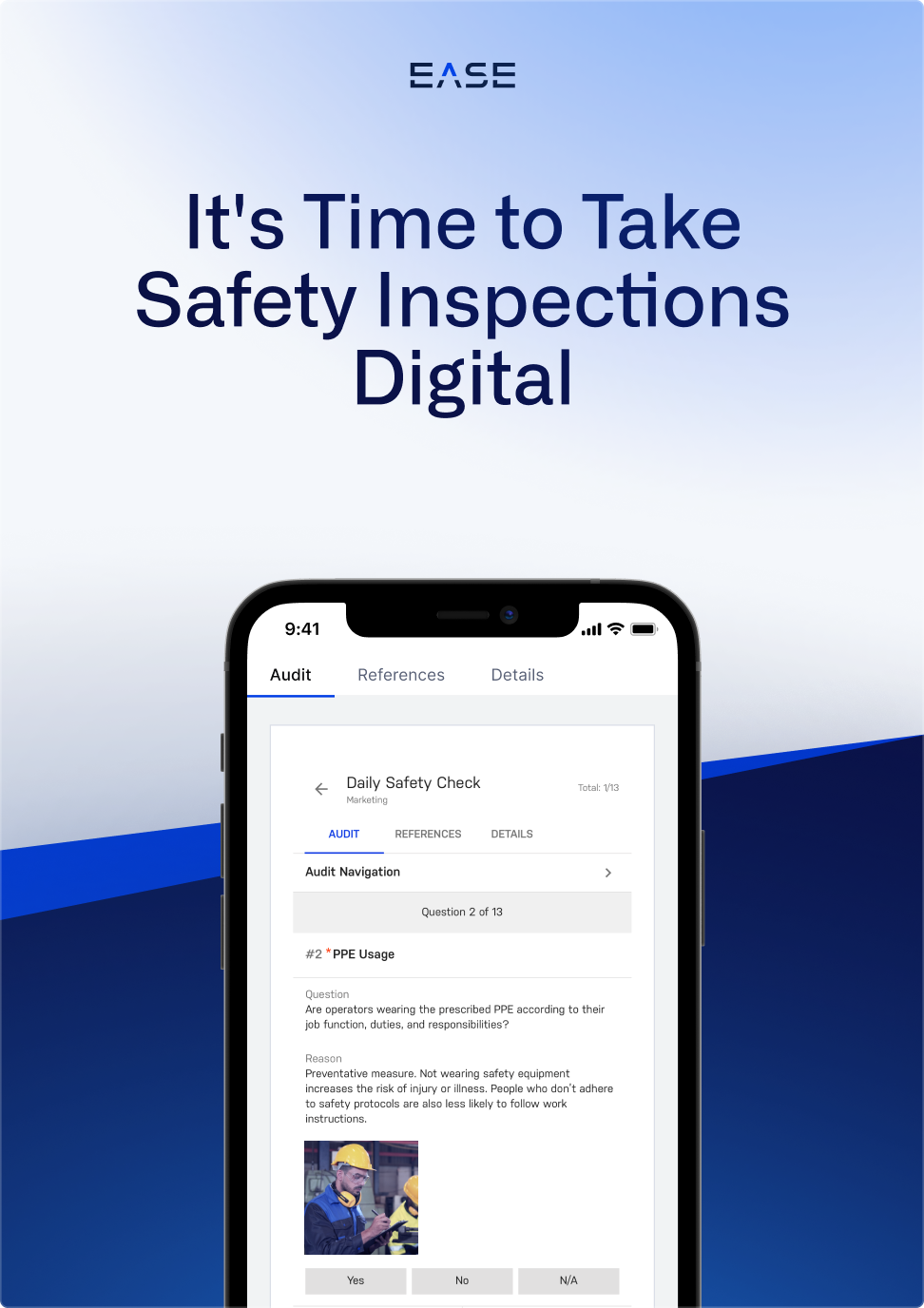10 Ways to Give Better Safety Feedback

Behavior-based safety programs are prevalent in many organizations today, an approach that uses observation and feedback to promote safe actions.
What some companies overlook, however, is that the quality of your safety feedback directly impacts whether you can get people to change their behavior.
So what makes good safety feedback, and what mistakes should leaders avoid? In this article, we look at 10 ways to give better safety feedback to foster safety culture and reduce incidents.
Get ideas for behavior-based safety questions to include on your safety walkthroughs
1. Stay Calm
Your initial reaction when observing an unsafe behavior might be anger. But if you want to get through to people, you’ll have to check your emotional response. Take a deep breath, and focus on initiating a conversation. You’ll be less likely to elicit a defensive response, and you just might learn something important from the employee.
2. Get Specific
The most effective safety feedback is specific and clearly states:
- The action you want to recognize or correct
- The impact on the organization
- Your expectations moving forward
For example, let’s say during a safety audit you notice an operator isn’t wearing the required personal protective equipment (PPE). Your response might look something like this:
“I noticed you aren’t wearing the arm guards required at this station. Wearing them can prevent a serious accident like amputation. They need to be on when you’re in the work area.”
Going a step further, you might even ask if the arm guards are comfortable and helping the operator do their job. You might learn that they don’t fit right, allowing you to address the root cause of the problem rather than assuming the operator just doesn’t care.
3. Make It Personal
Instead of sending an email, try to give feedback face-to-face. This helps avoid miscommunication, especially since tone is so difficult for the recipient to determine via email.
4. Add Value
Corrective feedback doesn’t necessarily need to be negative. Instead, look for ways to add value to what the employee is doing. One way to do this is by relating your own experiences and challenges to the situation. If you can share a time you faced a similar challenge, the employee will get more value from your input—and are more likely to receive it favorably.
5. Be Timely
The most effective feedback is delivered as close as possible to when you observe the behavior. Waiting until later creates opportunities for recurrence, while lessening the likelihood the employee even remembers what you’re talking about.
6. Be Consistent
Don’t wait to give feedback. Instead, make it a habit. This helps you get comfortable with giving it, and employees get more used to receiving it. Plus, you can avoid piling on and giving multiple pieces of feedback at once, which can make employees feel attacked and less receptive to what you’re saying.
7. Be Respectful
It’s critical to show respect to employees when giving safety feedback. Avoid being condescending, and consider whether a quick reminder would be better than a full-blown discussion or demonstration.
8. Avoid the “Compliment Sandwich”
Leaders may be tempted to sandwich their corrective feedback in between words of encouragement. The problem is that employees see right through this, and are less likely to take your input seriously. Being direct is more respectful of employees.
9. Recognize Safe Behavior
Giving safety feedback isn’t all about making corrections. It’s also about recognizing and reinforcing safe behavior—a key cornerstone of behavior-based safety as a whole. Again, you want to be specific about the safe behavior, taking time to make a habit of giving positive feedback.
10. Get Involved
People respect feedback from those who understand their day-to-day challenges—not those that lead from an arm’s length distance. In this context, safety leaders can take a page from the concept of Gemba in quality management. Gemba is Japanese for “the real place,” referring to the place where work happens.
Giving good safety feedback requires leaders to be present on the plant floor, going to the Gemba so that they really understand the employee experience. Digital safety inspections can provide an ideal framework for building this habit, with checklists that can be completed quickly on a mobile device. This provides visibility into plant floor safety risks, while also making it easier to log, track and measure observations.
Everyone can remember a time when they were embarrassed by receiving criticism from a boss. In many cases, you’re more likely to remember that feeling than the piece of feedback received. By following the steps outlined here, leaders can avoid this type of emotional response. What’s more, this approach cuts straight to the heart of the matter: changing unsafe behaviors, and reinforcing safe ones.
